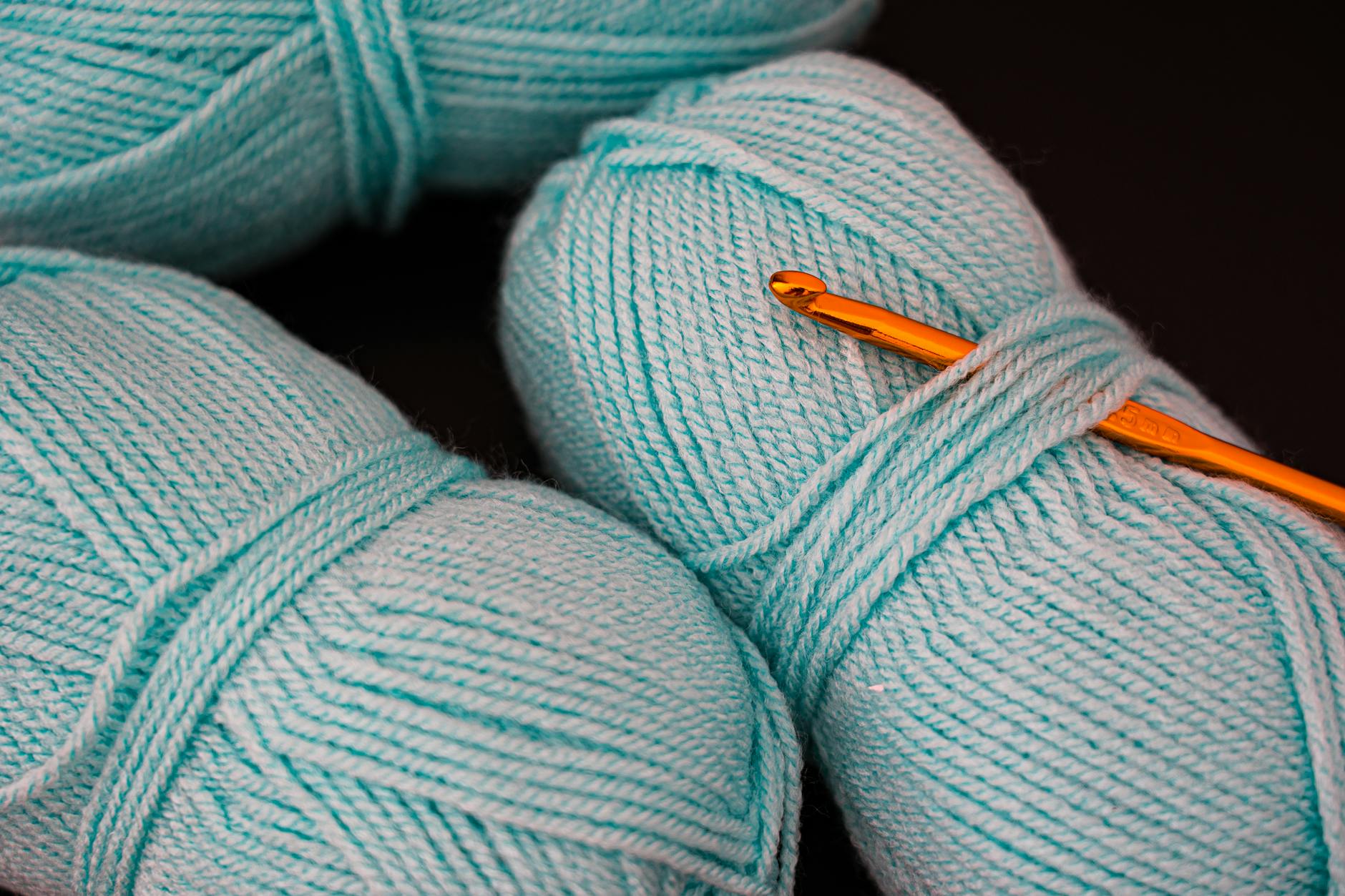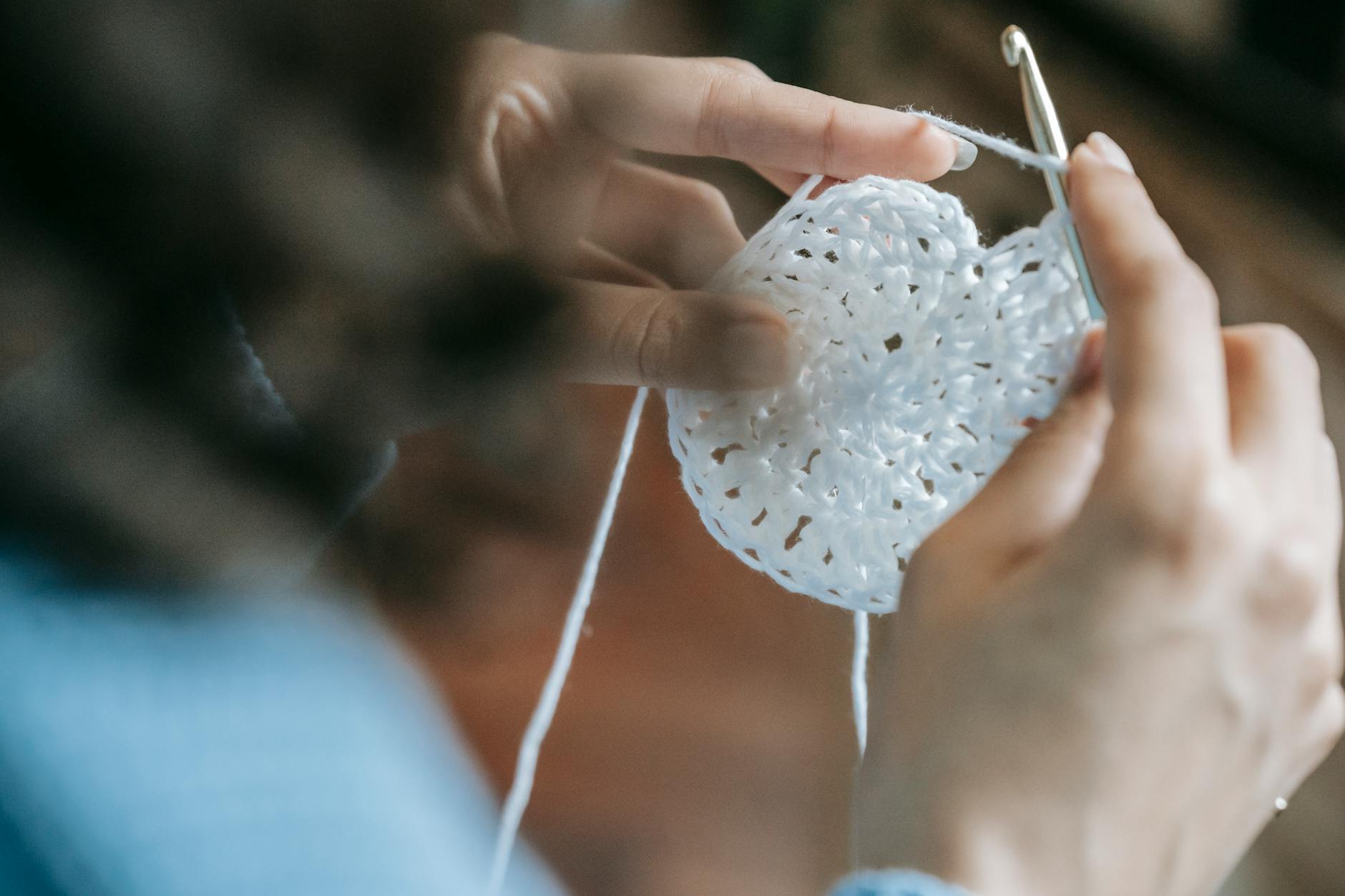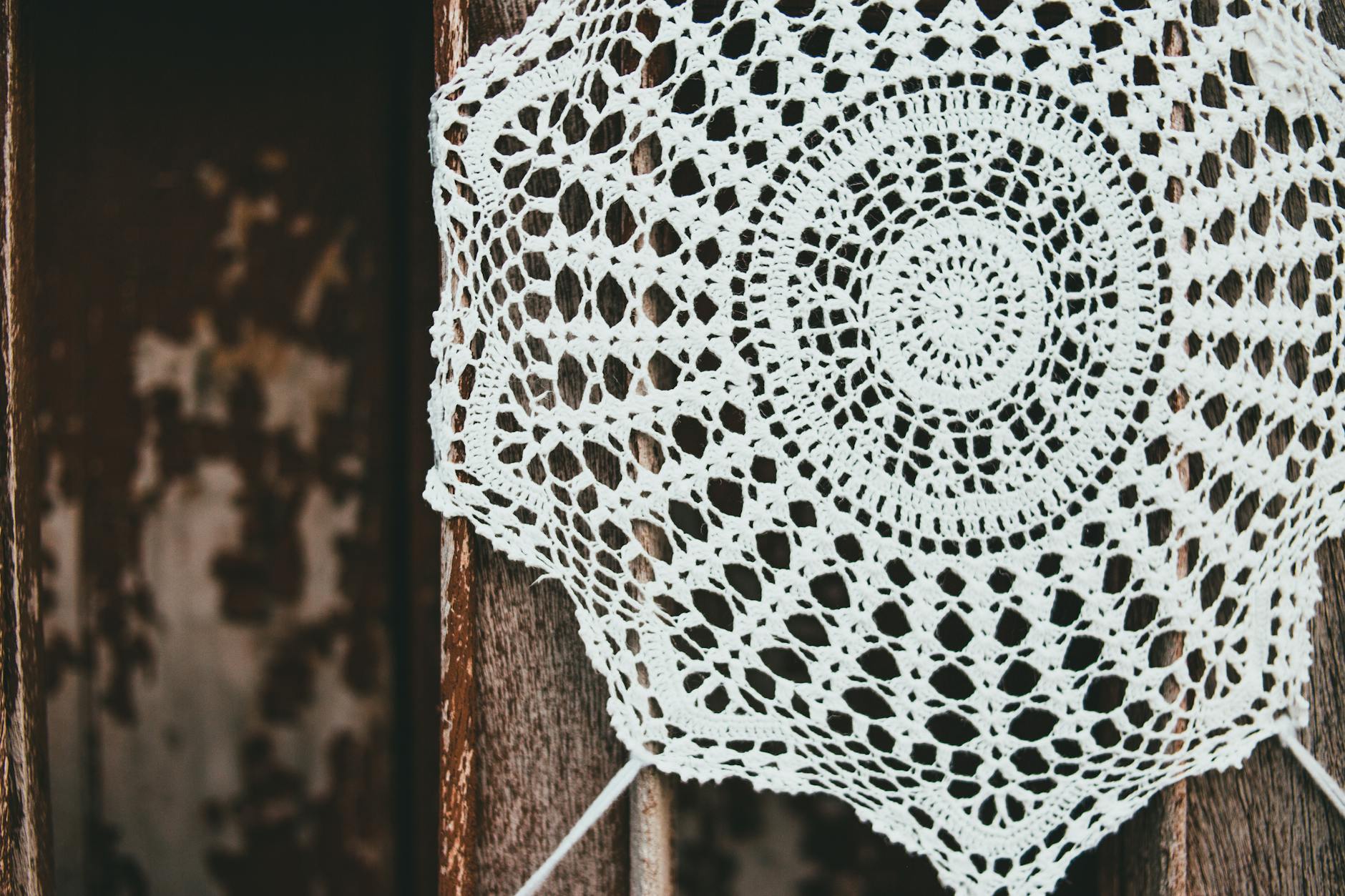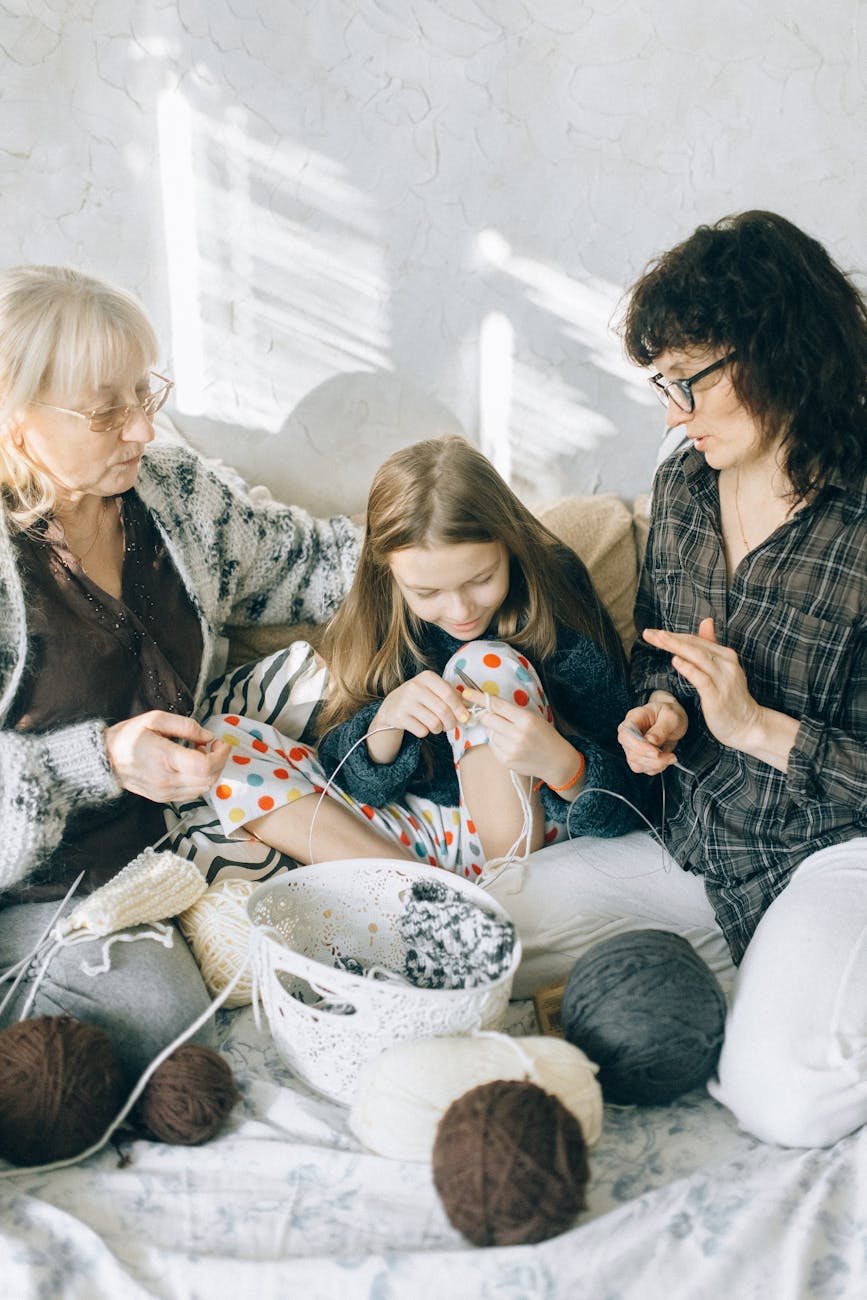
Crochet Abbreviations and Basics: A Beginner’s Guide
Crochet is more than just a creative pastime; it’s a universal language of loops and knots. By mastering basic techniques and understanding crochet abbreviations, you’ll unlock endless possibilities for crafting unique items. Whether you're making cozy blankets or intricate decorations, learning the essentials sets the stage for success. We’ll dive into definitions, key terms, and abbreviations to make your crochet journey easier.
Check out this YouTube tutorial to learn about basic crochet stitches and abbreviations. For written patterns, visit Written Patterns Tagged "crochet pattern".
What is Crochet?
Crochet is more than just a craft; it's a clever way to turn yarn into art. Whether you're working on a warm blanket or a small, decorative item, crochet offers endless ways to express your creativity. Using a simple tool―a crochet hook―and some yarn, you can create various textures, patterns, and shapes. But what exactly is crochet, and how does it work? Let’s break it down.
Defining Crochet
At its core, crochet is a method of creating fabric by looping yarn or thread with a hooked needle. Unlike knitting, which uses multiple needles, crochet relies on one hook. This makes it approachable for beginners and highly portable. Did you know that crochet gets its name from the French word "crochet," meaning small hook? This simple tool is at the center of everything you'll make.
To learn more about starting with crochet, you can explore Easy Crochet Projects for Beginners. It’s a great way to build confidence with basic projects.
 Photo by Miriam Alonso
Photo by Miriam Alonso
How Crochet Works
Crocheting involves wrapping yarn around a hook and pulling it through loops. This creates individual stitches that link together to form a fabric. The stitches can be adjusted—tighter for a dense material or looser for an airy effect. All crochet patterns build off a few essential stitches like the chain, single crochet, and double crochet.
This craft’s flexibility makes it suited for projects such as clothing, home décor, and accessories. Beginners often start with simple items like scarves or dishcloths, gradually advancing to more complex designs. For example, patterns like those from the Beginner Crochet Patterns offer great options to help you get started.
Why Crochet is Loved Worldwide
Crochet has gained a loyal following around the globe because it’s both relaxing and rewarding. It’s more than just creating—it’s a way to de-stress and focus. Plus, it's portable. You can work on a project almost anywhere, from your living room to a park bench.
If you want to dive deeper into the history and cultural significance of crochet, you can reference reliable sources like What is Crochet? and How to Get Started or explore the History of Crochet. Understanding its background enriches the experience of learning and practicing crochet.
Keep reading to understand some basic crochet abbreviations and how they simplify creating your own handmade treasures.
Essential Crochet Tools and Materials
Getting into crochet requires some tools and materials designed to make the craft easier and more enjoyable. Whether you’re a beginner or experienced crocheter, having the right supplies ensures your projects come together effortlessly. Let’s explore the must-haves for creating your crochet masterpieces.
Crochet Hooks
Crochet hooks are the most important tool in your kit. These come in various sizes and materials to suit your style and project needs. Plastic, metal, and bamboo are the most common materials, each with unique characteristics.
- Plastic hooks are lightweight and budget-friendly but may not glide as smoothly through yarn.
- Metal hooks offer durability and a slick surface, perfect for faster stitching.
- Bamboo hooks feel warm in your hands and are great for those who prefer an eco-friendly option.
The size of the crochet hook matters too. Larger hooks (like 10mm) are best for chunky yarn and quick projects, while smaller hooks (2mm–3mm) are ideal for intricate patterns. Typically, your yarn label will recommend the best hook size to use.
Learn more about the variety of crochet hooks and how to choose the best one over at How to Crochet for Beginners – Tools Needed.

Photo by Castorly Stock
Yarn Types and Selection
Yarn is the foundation of any crochet project. The type you use affects how your final piece looks, feels, and drapes. There are three common yarn types to consider:
- Cotton: Durable, lightweight, and highly absorbent. Best for summer wear and accessories like market bags.
- Wool: Warm, stretchy, and excellent for winter projects like hats or blankets.
- Acrylic: Affordable, versatile, and easy to care for—perfect for beginners and everyday projects.
When choosing yarn, consider the weight (thickness) and color. A medium-weight yarn (also called worsted) is often recommended for beginners due to its ease of use. Bright or light colors make it easier to see stitches, which is helpful when you’re starting.
For specific recommendations, check out Essential Crochet Tools for Beginners: Get Started!.
Other Necessary Tools
Besides hooks and yarn, a few additional tools make crocheting more efficient and enjoyable:
- Scissors: Sharp scissors for cutting yarn cleanly.
- Stitch Markers: Essential for keeping track of your stitches, especially in larger or more complex projects.
- Measuring Tape: Useful for checking dimensions and ensuring your project is on track.
- Yarn Needles: Also known as tapestry needles, these help weave in loose ends to give projects a polished look.
These tools are small but mighty, serving as the perfect companions for stress-free crocheting sessions. For more comprehensive tips, you can explore Crochet Instruments and Equipment You Should Have.
With the right tools and materials, you’re well-equipped to start a rewarding crochet journey. In the next section, we’ll discuss how to care for and maintain your crochet supplies to ensure they last for years.
Basic Crochet Stitches
Mastering basic crochet stitches is essential for anyone starting their crochet journey. Each stitch builds upon the previous, creating patterns, textures, and fabrics that bring projects to life. Let’s break down a few of the most fundamental stitches that should be in every crocheter’s toolkit.
Chain Stitch (Ch)

Photo by Miriam Alonso
The chain stitch (Ch) is the starting point for almost all crochet projects, making it one of the most critical skills to learn. It creates a simple, linear foundation that supports other stitches.
To make a chain stitch:
- Create a slip knot on your hook.
- Yarn over (wrap the yarn over the hook).
- Pull the yarn through the loop on your hook.
Each pull forms a chain, resembling a small braid. Whether you're working on blankets or garments, this stitch sets the stage for the rest of your project. If you're stuck, check out Crochet 101: A Beginner’s Guide to Mastering the Craft for step-by-step guidance.
Single Crochet (Sc)
The single crochet (Sc) stitch is often the first significant technique beginners tackle. It’s a versatile and straightforward stitch, perfect for creating dense, flat pieces like pot holders or simple bags.
Here’s how to perform a single crochet stitch:
- Insert your hook into the desired stitch.
- Yarn over and pull a loop through (you’ll have two loops on your hook).
- Yarn over again and pull through both loops.
This stitch forms a tight, compact fabric, making it ideal for projects needing structure. Want more practice? Explore 6 Basic Crochet Stitches for Beginners for additional clarity.
Double Crochet (Dc)
The double crochet (Dc) stitch is a favorite among crocheters for its height and flexibility. It creates a looser and more open fabric, ideal for scarves, sweaters, or even lacy patterns.
Follow these steps to complete a double crochet:
- Yarn over, then insert your hook into the desired stitch.
- Yarn over again and pull up a loop (three loops will be on the hook).
- Yarn over and pull through the first two loops.
- Yarn over one last time and pull through the remaining two loops.
Double crochet stitches are taller than single crochet stitches, offering a more textured look. If you're curious to see it in action, visit How to Do a Double Crochet for a detailed demonstration.
Each of these stitches has its own character, and combining all three will give you a strong foundation in crochet. Once you’ve mastered these, you’ll be ready to tackle more advanced techniques!
Understanding Crochet Patterns
Crochet patterns are like roadmaps, guiding your hands to create something amazing out of yarn. Once you familiarize yourself with their structure, reading and following patterns becomes much easier. Let’s break it down into two critical elements: understanding crochet abbreviations and deciphering instructions.
Common Crochet Abbreviations
The language of crochet patterns relies on abbreviations. These shorthand terms keep instructions concise and easy to follow. Here are some of the most common ones you’ll encounter:
- Ch (Chain Stitch): The foundation of most patterns.
- Sc (Single Crochet): A simple stitch that creates a dense fabric.
- Dc (Double Crochet): A taller stitch, great for building height and texture.
- Sl St (Slip Stitch): Used to join rounds or move across stitches without adding height.
- Hdc (Half Double Crochet): A midway stitch, offering flexibility between height and density.
Here’s a quick example: If a pattern says, “Ch 10, Sc in the next 5 stitches,” it translates to making 10 chain stitches and then working a single crochet stitch into the next five stitches on your yarn.
If you need a more comprehensive list, visit Crochet Abbreviations. This guide covers all the essential abbreviations you’ll come across in patterns.
For external lists, check out Darn Good Yarn's Crochet Abbreviations Guide for even more crochet terms that you might find handy.
Deciphering Pattern Instructions
At first glance, reading crochet patterns can feel overwhelming. But it’s like learning a new language—practice makes perfect. Here are some tips to help:
- Start Small: Choose beginner-friendly patterns with clear instructions, like those available in the Learn to Read Crochet Patterns guide.
- Understand Repeats: Patterns often use brackets or asterisks to indicate sections you’ll need to repeat. For example, (Sc, Dc) means to alternate single and double crochets.
- Watch for Gauge: Pay attention to the suggested gauge—a small sample to ensure your stitches match the designer’s size. This is especially important for clothing or fitted items.
- Ask for Help: Don’t hesitate to refer to tutorials or groups if you’re stuck. A great resource for beginners is the Secret Yarnery YouTube Channel, which has step-by-step guides for almost every technique.
Reading crochet patterns becomes natural in time. They’re written to empower you, turning lines of text into beautiful creations. Keep practicing, and soon, they’ll feel like second nature!
Tips for Beginners
Starting crochet can be both exciting and a little overwhelming at first. There's a unique rhythm and feel to it, and like any skill, it's all about building confidence one step at a time. Below, I’ll share some actionable tips to help kickstart your crochet journey.
Choosing the Right Projects

Photo by Erik Mclean
When you're new to crochet, picking the right project can make all the difference. The key is to choose patterns that are both enjoyable and not overly complex. Here are some great beginner-friendly options:
- Scarves: A simple rectangle pattern is all it takes, allowing you to focus on maintaining even stitches.
- Dishcloths: Quick to finish and practical, these help you practice basic stitches like single crochet and double crochet.
- Headbands or hair ties: These are smaller pieces, letting you complete a project in just a couple of hours.
- Coasters: Fun, fast, and forgiving—perfect for practicing rounds.
I recommend starting with something small to build confidence without feeling overwhelmed. If you need inspiration, check out Small Crochet Projects for beginner-friendly ideas that let your creativity shine.
Practice and Patience
Let's be honest, learning anything new can be challenging. Crochet is no exception. The first few rows may feel clumsy, and your tension might be all over the place—and that’s okay! This is part of the learning curve.
- Set aside time for practice. Even just 15 minutes a day can make a difference in your skill progression.
- Experiment with techniques. Try different yarn weights and hook sizes to find what feels comfortable.
- Don’t rush. Focus on balancing speed with accuracy; consistent stitches matter more than speed in the beginning.
And remember, every seasoned crocheter started where you are right now. With patience and repetition, muscle memory kicks in, and soon enough, you'll find a smooth rhythm. For more guidance and tips, check out Crochet 101: A Beginner's Guide to Mastering the Craft.
Every stitch you make is a step closer to becoming a seasoned crocheter. Just keep practicing and don’t hesitate to start over if it doesn’t feel right. Mistakes are just part of the learning process!
Exploring Crochet Community and Resources
Crochet thrives within an enthusiastic and supportive community, offering resources that inspire creativity and connection. Whether you’re new or have crocheted for years, diving into these circles can help you learn, grow, and find encouragement. Let’s look at some of the most vibrant places to gather inspiration and connect with others.
Online Communities and Forums
Joining online crochet communities introduces you to countless like-minded individuals focused on sharing ideas, techniques, and patterns. Several platforms stand out as excellent hubs for crocheters:
- Ravelry: A massive database for crocheters and knitters, Ravelry offers forums, pattern suggestions, and yarn reviews. Joining this platform is like stepping into a virtual library dedicated to fiber arts. Explore it here.
- Facebook Groups: Searching for crochet-specific groups on Facebook connects you to vibrant discussions and project showcases. Look out for groups with beginner support or niche interests, such as amigurumi or home décor.
- Instagram Communities: Hashtags like #crochetcommunity and #crochetlove serve as windows into crochet trends. Instagram allows you to follow designers and makers who push the boundaries of creative stitching.
- Crochet Guild of America (CGOA): For a more formal crochet environment, consider joining the CGOA. They organize events, offer scholarships, and bring crocheters together for collaborative projects.
Connecting with these communities will make your crochet journey more inspiring. If you’re interested in how these networks can transform your skills, you might enjoy reading My Crochet Journey in Kenya, a reflection on how crochet brings people together globally.
 Photo by Nataliya Vaitkevich
Photo by Nataliya Vaitkevich
YouTube Resources
When it comes to learning, there’s no substitute for visual guidance—and YouTube is a treasure trove of crochet tutorials. One standout channel is the Secret Yarnery YouTube Channel, where you’ll find:
- Simple step-by-step guides tailored for beginners.
- Advanced techniques for those ready to expand their skill set.
- Livestreams for real-time lessons and Q&A sessions.
- Fun projects like granny squares, baby blankets, and festive décor.
If you’re looking for structured tutorials, check the Crochet Tutorials section, where you’ll find links to many video patterns. Whether you’re interested in mastering basic stitches or learning creative variations, there’s something here for everyone.
With so many resources at your fingertips, becoming part of a crochet community—online or offline—can expand your skills and spark creativity in ways you might not expect.
Conclusion
Understanding crochet isn't just about creating projects; it's about learning a timeless craft that fosters creativity and relaxation. From grasping the basic tools and materials to decoding crochet abbreviations, you're opening the door to limitless handmade possibilities.
If you're ready to dive further into crochet, check out Mastering the Basics of Crochet: A Step-by-Step Guide, which breaks down essential techniques and tips in an easy-to-follow format. You might also find this comprehensive Crochet Abbreviations Master List helpful for understanding the shorthand used in patterns.
With every stitch, you'll gain more confidence. Keep practicing, exploring new stitches, and challenging yourself to try different patterns—you’ll be amazed at how quickly your skills grow!
FAQ: Crochet for Beginners
1. What is the easiest crochet stitch for beginners?
The chain stitch (Ch) and single crochet (Sc) are the easiest to start with. Both are simple to learn and form the foundation for most crochet projects.
2. What size crochet hook should I start with?
A medium-sized crochet hook, such as size 5mm (H-8), is ideal for beginners. It pairs well with worsted-weight yarn, which is easy to work with.
3. Which yarn is best for beginners?
Acrylic yarn in a medium (worsted-weight) works best for beginners. It’s affordable, easy to handle, and comes in a variety of colors.
4. How do I read crochet patterns?
Crochet patterns use abbreviations like Sc (single crochet) or Dc (double crochet). Start small, follow the instructions step by step, and reference a guide to crochet abbreviations for help.
5. Why is my yarn so tight or loose?
Tension depends on how tightly or loosely you hold your yarn and hook. With practice, you’ll find a natural rhythm for consistent stitches.
6. How long does it take to learn crochet?
Basics can be learned in a few hours, but mastering techniques depends on practice. Start small and gradually challenge yourself with more complex patterns.
7. What type of projects should I start with?
Easy projects like scarves, dishcloths, or coasters are perfect for practicing stitches and building consistency.
8. How can I fix mistakes in crochet?
Use your crochet hook to carefully pull the yarn back through the stitches to "undo" them. This process is called "frogging."
9. How do I keep my edges straight?
Always count your stitches at the end of each row and ensure you’re starting and ending rows in the correct spaces.
10. How can I join the crochet community?
Join online groups like Ravelry, Facebook crochet communities, or follow crochet creators on YouTube and Instagram. Participate in challenges and engage with other enthusiasts!
Let me know if you'd like to expand on any of these questions or require additional information.

As an experienced crochet enthusiast and advocate, I have witnessed firsthand the transformative power of crochet. Through years of exploration and creativity, I have honed my skills and developed a deep understanding of the meaning behind crochet. It is my pleasure to share my knowledge, inspiration, and guidance with you, my fellow crochet enthusiasts. Let us continue to celebrate the beauty and significance of crochet, one stitch at a time.
With warm regards,
Christa

